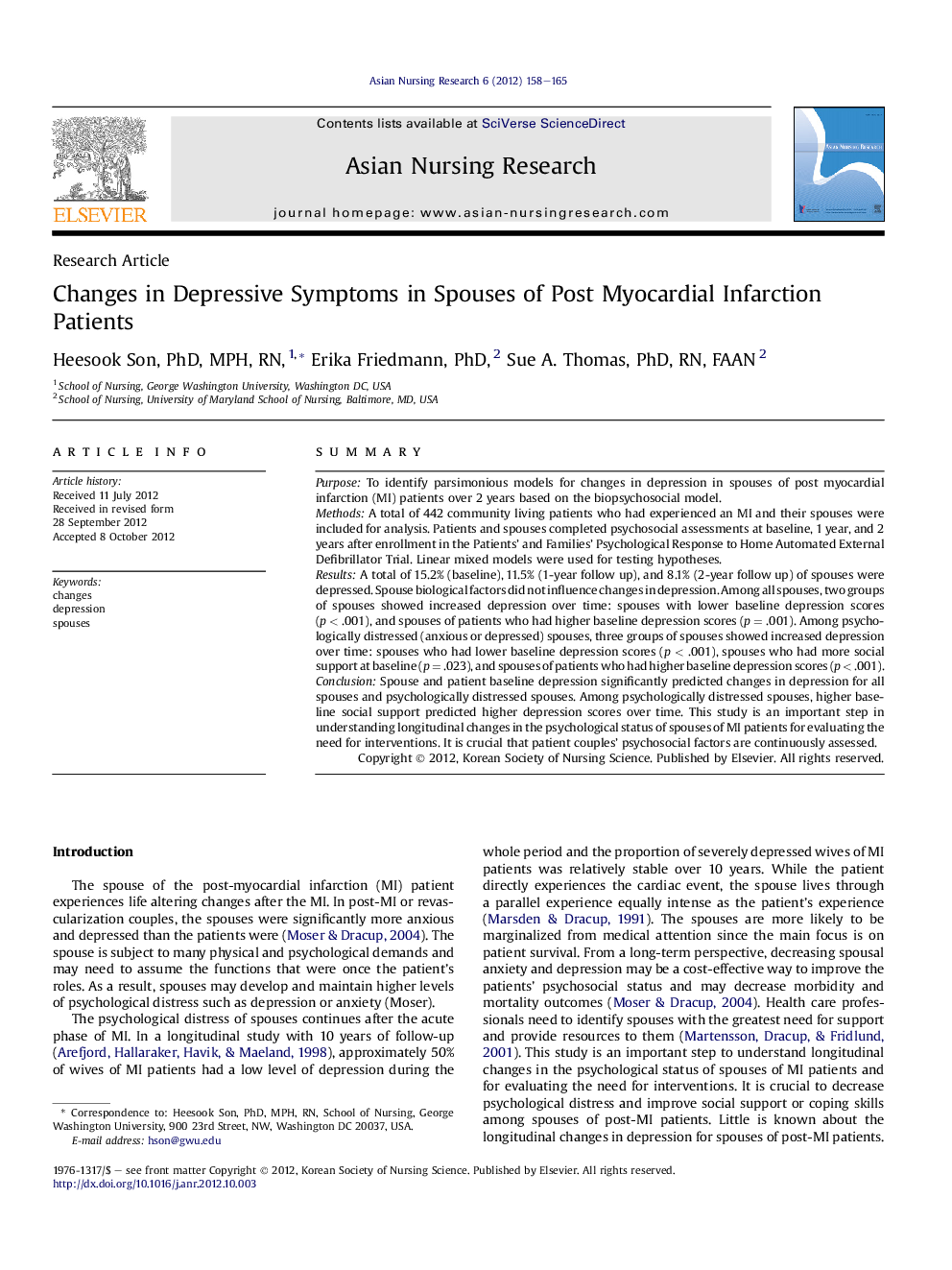| Article ID | Journal | Published Year | Pages | File Type |
|---|---|---|---|---|
| 2645074 | Asian Nursing Research | 2012 | 8 Pages |
SummaryPurposeTo identify parsimonious models for changes in depression in spouses of post myocardial infarction (MI) patients over 2 years based on the biopsychosocial model.MethodsA total of 442 community living patients who had experienced an MI and their spouses were included for analysis. Patients and spouses completed psychosocial assessments at baseline, 1 year, and 2 years after enrollment in the Patients' and Families' Psychological Response to Home Automated External Defibrillator Trial. Linear mixed models were used for testing hypotheses.ResultsA total of 15.2% (baseline), 11.5% (1-year follow up), and 8.1% (2-year follow up) of spouses were depressed. Spouse biological factors did not influence changes in depression. Among all spouses, two groups of spouses showed increased depression over time: spouses with lower baseline depression scores (p < .001), and spouses of patients who had higher baseline depression scores (p = .001). Among psychologically distressed (anxious or depressed) spouses, three groups of spouses showed increased depression over time: spouses who had lower baseline depression scores (p < .001), spouses who had more social support at baseline (p = .023), and spouses of patients who had higher baseline depression scores (p < .001).ConclusionSpouse and patient baseline depression significantly predicted changes in depression for all spouses and psychologically distressed spouses. Among psychologically distressed spouses, higher baseline social support predicted higher depression scores over time. This study is an important step in understanding longitudinal changes in the psychological status of spouses of MI patients for evaluating the need for interventions. It is crucial that patient couples' psychosocial factors are continuously assessed.
